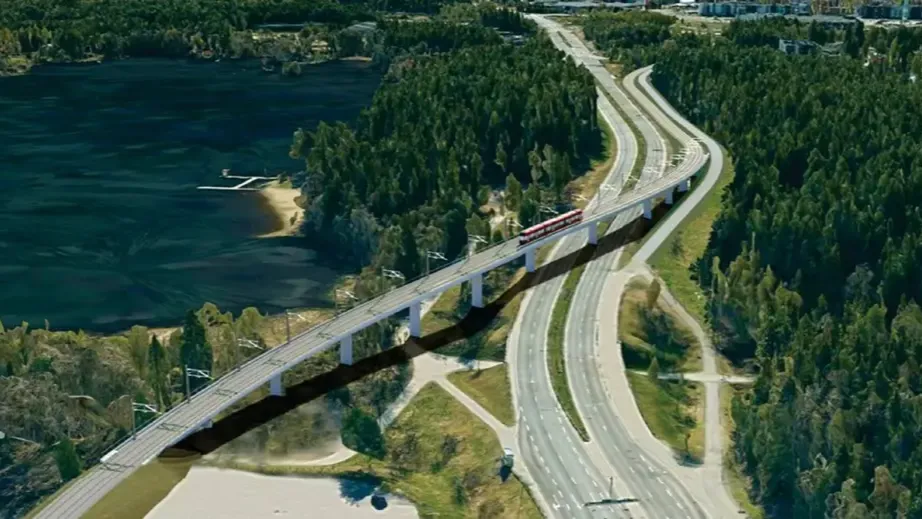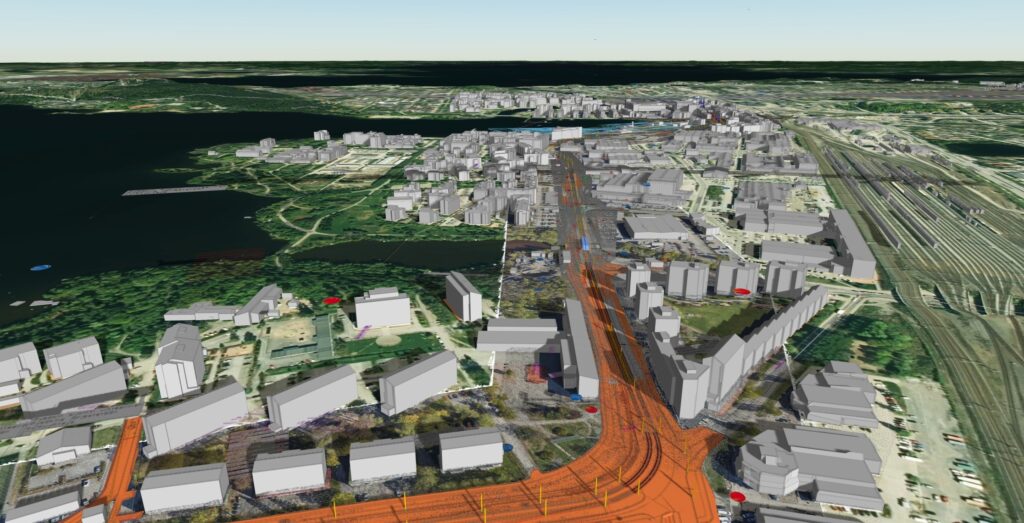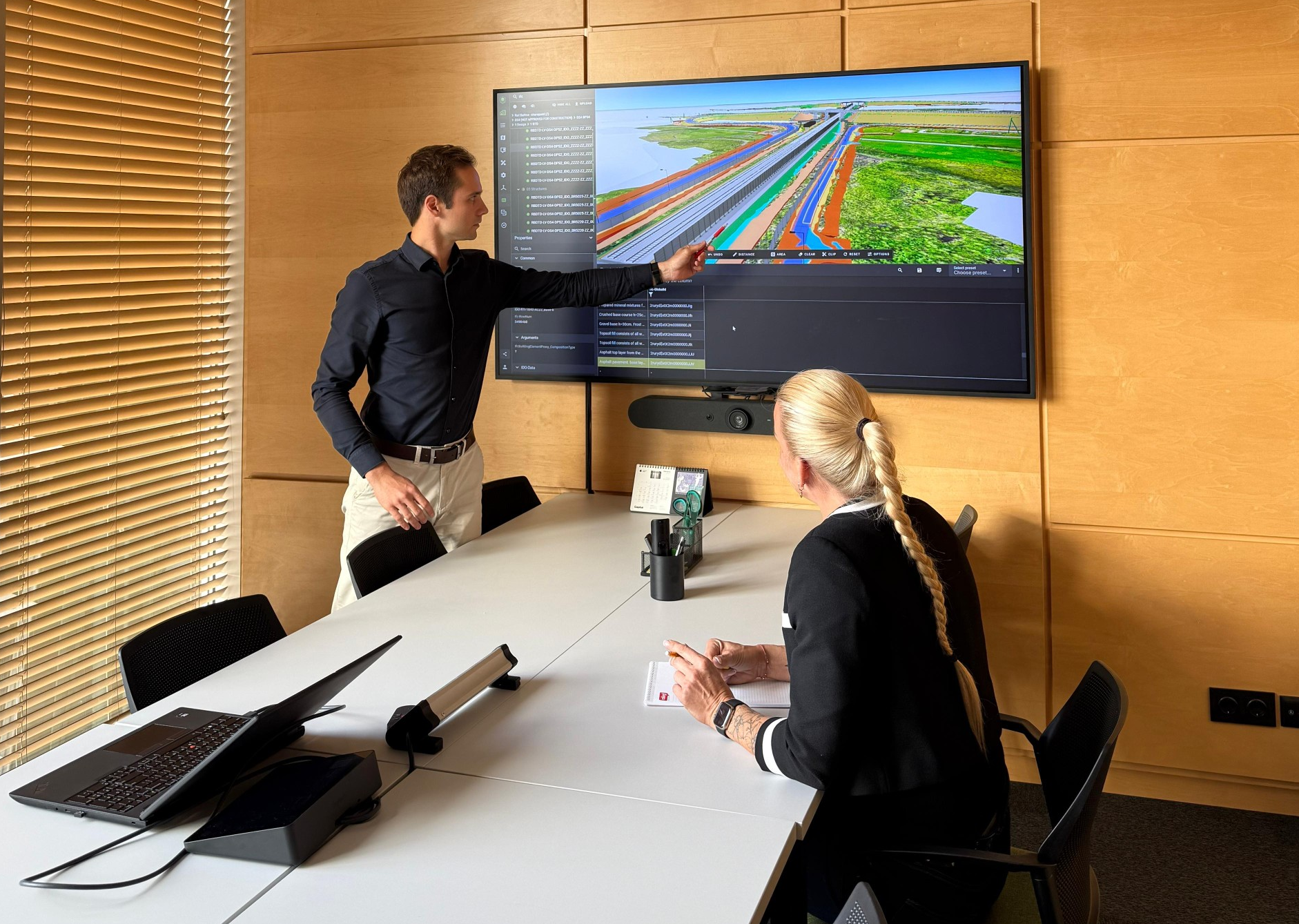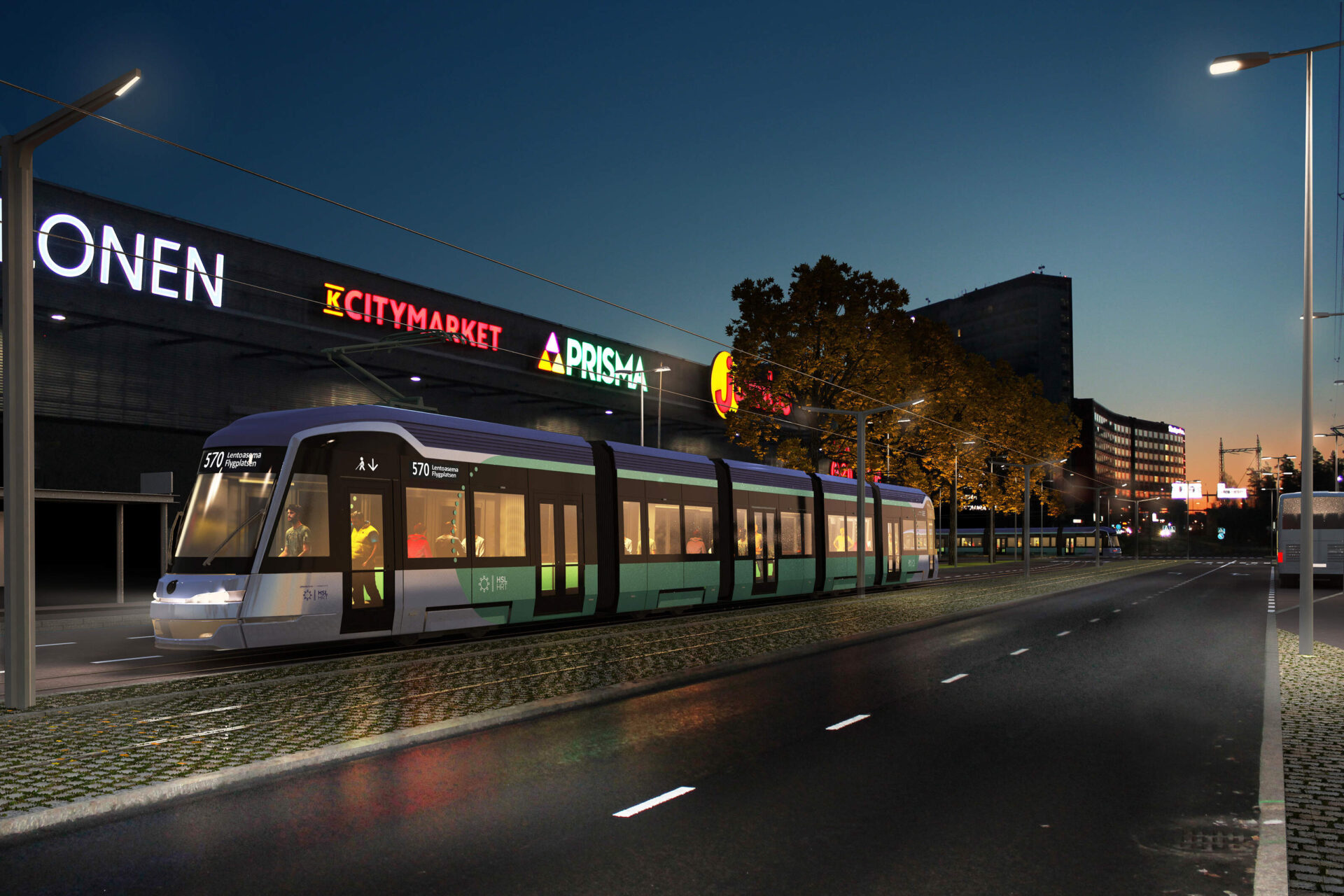Pirkkala-Linnainmaa Tramway

Information Management for Tampere’s Tramway Pirkkala–Linnainmaa Alliance is a Complex Entity
19.11.2024
The development phase of Tampere Tramway’s Pirkkala–Linnainmaa Alliance began in October 2023, marking a pivotal step towards expanding the tramway network. With the selection of key service providers, a tailored information management system was established, setting the foundation for efficient design and construction of this ambitious and complex project.
The project’s development phase of the alliance follows the earlier project planning phase, which concluded in February 2023. During the development phase, preliminary street designs and alternative evaluations outlined in the project plan were refined. The alliance prepared street plans, and a detailed project plan, and calculated the target cost for construction. The plan extends the existing tramway section between Sori Square and the Kauppi Campus, with the total length of the planned rail branches amounting to 13.6 kilometers.
Based on the results of the development phase, the Tampere City Council and Pirkkala Municipal Council decided at their meetings on 21 October 2024 to build the tramway in two phases.
The implementation of the second phase will depend on the availability of state funding. The clients of the project are Tampereen Raitiotie Oy, the City of Tampere, and the Municipality of Pirkkala.
We interviewed Pirli’s data management manager Atte Kajander (Sweco), the project’s BIM coordinator Teppo Viinikka (NRC Group), and Annika Jalonen from AFRY (project’s situational awareness lead) about the construction of the project’s data management package.

A year is a short time. However, it is typical for development phases that the plans should be completed and ready for presentation within a year.
No single system could meet all the information management challenges for a project of this scale. In this project, a suitable entity for the development phase of the alliance was found specifically for the demanding tramway project.
Three agile Finnish providers were selected: M-Files, Flou.io, and Vektor.io. These providers have also supplied software for other major infrastructure projects in Finland, such as the Crown Bridges Light Rail, the Lentorata Airport Line, and the Raide-Jokeri light rail.
We inquired with the project’s BIM coordinator Teppo Viinikka, about the selection of M-Files, Flou.io, and Vektor.io.
“Working with Finnish providers makes interaction and collaboration meaningful. Together, we can develop solutions with shared purpose and agility,” explains Viinikka.
“M-Files was an easy choice from the start, as it was already in use by the client. M-Files is a metadata-based system that allows users to compile data into customized user folders according to their needs,” Viinikka adds.
“Flou.io was added to provide visualized information so everyone could stay informed. We started to develop situational awareness, task management, and scheduling with it,” Viinikka explains Flou.io’s role as part of the information management system.
“We had a place for documents and situational awareness, but we still needed a tool to visualize plans,” Viinikka sums up. “We selected Vektor.io as a user-friendly tool for plan visualization.”
“We already knew how reliable Vektor.io is. It’s user-friendly and doesn’t get blocked. When users understand they can’t make mistakes with Vektor.io, they feel confident using it. We wanted an approachable tool for the project,” Viinikka adds.
We also asked Atte Kajander, who is responsible for Pirli’s information management, about how smooth the construction of the project’s information management system was.
“The process was smooth, especially since the client already had a vision for using M-Files. Vektor.io was added when we needed a model integration tool for coordinating designs and interactive planning. Vektor.io already has an interface for M-Files and was a familiar tool from previous projects—an easy choice. We also had positive past experiences with Flou.io,” summarizes Kajander.
Ensuring Smooth Information Flow Is the Key to Everything
In the Pirkkala–Linnainmaa alliance project, M-Files handles the storage, sharing, and version control of plans, documents, and contracts. M-Files is a metadata-driven information management system that organizes data by content rather than traditional folder structures. Flou.io provides project management features such as schedules, costs, and decision tracking. Vektor.io integrates and visualizes information models, 2D plans, and geospatial data in a single browser-based interface.
These three systems are integrated and work seamlessly together without overlap.
We asked Annika Jalonen, the project’s situational awareness lead, about the role of effective information management for project situational awareness and leadership.
“Effective information management is essential. Transparent information that’s available to everyone forms the foundation of the entire project. Ensuring the flow of information is the key to everything,” Jalonen emphasizes.
We also asked how the information management system has functioned during the development phase and the importance of integration for efficient information flow.
“It’s been crucial to have all the material in one place. Information doesn’t need to be saved twice, which ensures its preservation. This also eliminates the need for separate archiving,” says Kajander.
“So far, everything has worked well. We’ve been able to further develop the system along the way, including interfaces and software. As the project moves into the construction phase, this information management system will remain in use,” Kajander estimates.
Construction to Begin in December
The first construction phase of the Pirkkala–Linnainmaa tramway will start once the council decisions become legally binding. The construction of the first phase is scheduled to start in December 2024 and be completed in August 2028.
The second phase, from Partola to Pirkkala, Suuppa, and Niihama stop to Linnainmaa will start in May 2028 and be completed in January 2032, pending state funding.
We asked Teppo Viinikka about the anticipated benefits of the information management system for the tramway’s construction phase.
“When construction begins, a huge number of new people will join the project. It’s essential to guide them to the latest, most accurate information,” Viinikka clarifies.
“With just a couple of clicks, users can access all the necessary information relevant to them on Vektor.io. The cornerstone is that accurate information is available immediately and that everyone is aligned, using the same terminology. It’s vital that no data is overlooked on the planning table or in any other phase,” concludes Viinikka.
All interviewed project leaders emphasized the same point: construction cannot succeed without effective information management.
Further details are available in the Tampere Tramway’s press release published on October 22, 2024.

